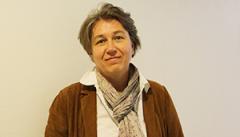
Research
Corrosion of materials: a public-private consortium born to last
A research consortium in the field of corrosion has been set up in Auvergne-Rhône-Alpes. It is called CorRTEx, brings together partners from the public and private sectors, and paves the way for a great deal of research into the sustainability of materials. Interview with Marion Fregonese, head of the Corrosion and Surface Engineering team at laboratoire MATEIS (Materials: Engineering and Science Lab) at INSA Lyon.
INSA is part of CorRTEx and plays an important role in the field of materials sustainability and corrosion. What is the added value of the consortium?
‘The pooling of tools and skills around corrosion in a collaborative framework. CorRTEx aims to meet the needs of manufacturers in terms of the corrosion of their equipment and installations. By forming a consortium, the partners have been able to equip themselves with a state-of-the-art tool, guaranteeing in particular the control of test environments up to high pressure (up to 200 bar) and high temperature (up to 350°C), and making it possible to test the corrosion resistance of various materials in a controlled environment. The instruments we want to use on the device will also allow us to advance our understanding of the basic mechanisms of degradation by corrosion’.
Who are the partners of this consortium?
‘Institut de la Corrosion (Institute of Corrosion), INSA Lyon, Mines Saint-Etienne, IFP Énergies nouvelles (French Institute of Petroleum - New Energies), Axel'One, MECM (Materials Engineering and Corrosion Management), the CNRS (National Centre for Scientific Research) and Lyon 1 University. The public-private association is a strong point of this consortium because it allows cutting-edge research partnerships to be applied to key issues. It is thanks to this configuration that the partners were able to equip themselves with this tool, unique to our knowledge in France, which enables them to control the environment in which the material is exposed, up to high pressures and temperatures and in severe conditions, including under acid gases (CO2, H2S)’.
What projects can be carried out using this equipment?
‘Institut de la Corrosion and IFP Énergies nouvelles are the operators of the loop, and will use it in part for their own research. Academic partners will also have the option to use it. But the idea is that collaborative projects will be created around this tool. An ANR (National Research Agency) project for applications in the field of geothermal energy is thus being set up. The corrosion loop can also be used as a support for regional and European projects, and projects in collaboration with manufacturers, particularly in the fields of energy and chemistry. In the coming weeks, it will be ‘run in’ on the Axel'One PPI collaborative innovation platform in Solaize, in the Rhône, where it will be permanently located’.
Keywords (tags)
News list
« Depuis toute petite, je n’ai jamais pu me définir entre scientifique ou littéraire »
Une délégation de haut niveau de l’Université Beihang reçue à l’INSA Lyon

